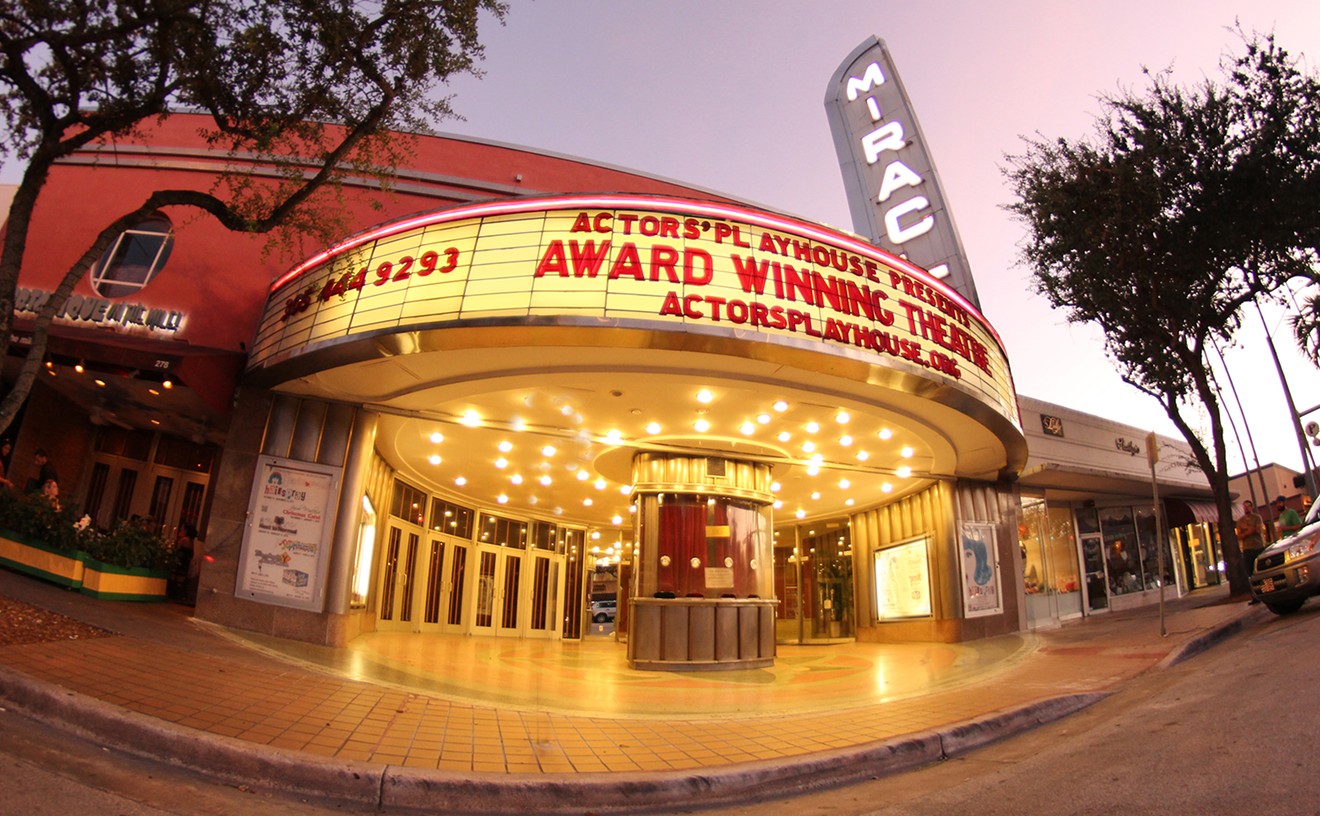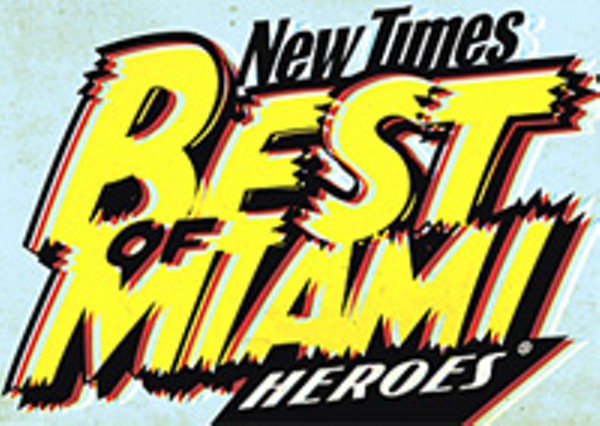Best Road to Avoid
Biscayne Boulevard between 70th and 79th Streets
There are few other roads in Miami-Dade County with the breadth and scope of the traffic nightmare that is Biscayne Boulevard. Construction has seemingly gone on for years, with no end in sight (one employee at a Dunkin' Donuts said it could last till May; we're not sure if he meant 2007 or 3007). Driving on the boulevard is a constantly changing and harrowing experience. Lanes come and go, orange cones disappear and reappear seemingly by the hour. In the past month, we've seen two accidents with our own eyes that were largely caused by inappropriate signage and general driver confusion. Walking along this stretch is impossible; anyone on foot has to climb over mountains of construction debris. Thinking about trying to patronize a business on the west side of the boulevardç Forget it. You will need a small tank to scale the debris/potholes/boulders. At night hookers, drug dealers, and folks waiting for the bus wander in the rubble. Certain parts (70th and Biscayne comes to mind) look like Baghdad: bombed out and depressing. Whoever planned this project at the FDOT should be fired. Or forced to commute on it every day, like we do. Oh, and don't even think about using NE Second Avenue as an alternate route. That, too, is regularly under construction.
Best Supporting Actress
Marcus Davis in La Cage aux Folles

Photo by Diego Pocovi
Marcus Davis is not, in fact, an "actress," nor is he even a woman. It doesn't matter. From the moment he stepped to the footlights at the Actor's Playhouse in its production of La Cage aux Folles as "Jacob," a maid/butler done up in lurid soubrette-cum-Mozart drag, he established himself as the most blazingly, supernaturally charismatic female force anybody had seen in a long while. In other productions of La Cage, there has been a tendency for actors playing Jacob to let the script do the work. The lines are so funny, and the character is such an incredible canvas, that you can easily win the hearts and minds of an audience by phoning it in, layering hambone gay stereotype atop hambone gay stereotype until you've got a creature so absurd that it's impossible not to laugh at him/her/it. Davis went a lot farther, making Jacob live and breathe in ways most folks never thought possible, digging not only humor, but affection, intelligence, and yes, even pathos out of a character designed for cheap, easy laughs. And he made it look so easy, so second-nature, that after leaving the show you'd be excused for wondering why no one ever thought to do it that way before.
- 280 Miracle Mile, Coral Gables, 33134 Map
- 305-444-9293
- actorsplayhouse.org
Best Acting Ensemble
Three Angels Dancing On a Needle, Square Peg Productions
Assurbinipal Babilla called his play Three Angels Dancing on a Needle, but Merri Jo Pitassi, Odell Rivas, and Miriam Kulick did a lot more than dance on that needle — they got skewered on it. If you were lucky enough to be hanging out in the Deluxe Arts complex this past January, you'd have seen one of the most jaw-dropping displays of dramaturgical virtuosity to hit Florida in ... well, who knowsç Three Angels was a play that brooked no real comparisons. Playing characters of pornographic ugliness, reeking of spiritual decay and utter moral desperation, the three actors urged each other on to operatic heights of shame and degradation before small audiences who, by play's end, didn't know whether to clap, puke, or kill themselves. Maybe Three Angels wasn't the most fun way to spend a Friday night, but these three actors didn't give a shit: They were playing for higher stakes than that. What those stakes might have been, the rest of us are still trying to figure out.
Best Mile of Miami
Flagler Street between the Miami River and NW 22nd Avenue
If Calle Ocho is the undisputed heart of Cuban America, then Flagler Street is the lesser-known capital of just about every other Spanish-speaking group in Miami, especially Central Americans. The mile-long length of Flagler west of the river is jam-packed with niche groceries, discount shoe stores, and food — ah, the food! In that short mile are dozens upon dozens of restaurants, cafeterias, bakeries, and truly awesome Nicaraguan fritanga. Flagler isn't a pretty street, but it's a busy one — the true center of Miami in more ways than one.
Best Theatrical Production
Three Angels Dancing On a Needle, directed by Michael Yawney for Square Peg Productions
There was a handful of productions this year that will stick in audience's memories for a long time, but Three Angels is probably the only one that will have those audiences doubting their memories. Scant days after the fact, it already felt like a dream: the kinky Catholic-voodoo-gothic rituals that sandwiched the scenes; the brutal speed of the monologues; the unearthly poetry of the writing; the unholy passion it inspired in the cast; the purely holy passion with which the actors endowed exiled Iranian writer Assurbanipal Babilla's ugliest, most fevered musings not with dignity, but something dirtier and infinitely more pitiable. After the cast received its standing O's, people milled around, wanting to talk about what they'd seen but not sure what to say. Given a dozen or so weeks to think about it, they might have come up with something like this: By showing us three people who've moved beyond desperation into utter, predatory insanity, and by giving their voices a chance to be heard, Square Peg made it apparent that even monsters can be human. The unavoidable subtext was that if monsters are human, the rest of us must be, too.
Best Urban Picnic Spot
Rainforest Garden Lounge
You could go to the beach, or maybe some crappy old park. But if you're an urban romantic, try the Rainforest Lounge. Laid out by renowned landscape architect Enzo Enea as a Design District showpiece for Art Basel Miami Beach two years ago, this little oasis is unmatched. Like a giant jewel box, it has funky, copper-color perforated metal walls around it, and flowering bushes and towering bamboo inside. Plenty of cushioned couches and tall stools with tables make brown-bagging it not only serene but easy. And to make things even better, it's next door to the historic Moore Building and in the heart of the Design District.
Best Choir
Unity on the Bay Choir
Unity on the Bay's music ministry says its mission is to "heal, enlighten, and minister through music in order to inspire and transform our world." A very pious aim to be sure, but don't expect Gregorian chants with a hymn or two thrown in on holidays. Unity's choir members tithe ten hours a week to make Sunday church-going a joyous musical experience. That means gospel, but it also means R&B, hip-hop, and jazz — everything from Destiny's Child to U2 to Andrea Bocelli. The choir's repertoire is as diverse as the congregation it sings to, and hallelujahs come as easily as hellos.
Best Class Disparity
Biscayne Boulevard between 69th and 70th streets
Miami has been criticized of late for being a city of the very poor and the very rich, where the middle-class has been squeezed out into the suburbs, or even to faraway North Carolina. There's something to this. A drive up Biscayne Boulevard reveals a Miami of the wealthy (wine shops, designer clothing stores, a car wash named Karma) and the poor (tired-looking liquor stores, hookers). But nowhere is the clash of classes more evident than between NE 69th and 70th streets, where diners at trendy Michy's sup on Turks and Caicos conch fillets (escargots style), while next door, down-on-their-luck folks live at the Saturn Motel for weeks on end. The two establishments are separated by an alley, yet they are worlds apart. For $65 you can sample a few tasty plates at Michy's (or get one bottle of wine) — or for the same money go next door and rent a room. Michy's was mentioned in Gourmet last year as one of the nation's top restaurants. The Saturn has a walk-up registration window with bulletproof glass.
Best Set Design
Lyle Baskin for Fat Pig
The set of Neil LaBute's tale of aborted love between a sweet fat chick and a not-so-sweet skinny guy was lovingly, elegantly, exactingly, and simply rendered by Lyle Baskin, a designer who regularly sends GableStage's brilliant shows rocketing to the next level of awesomeness. Fat Pig was a brutal, heartless story — one of the play's four characters had the soul of a poet, and she was endlessly shat upon by the other three, all of whom had approximately the soul of a moldering potato — and its cruelty was suggested, not by drab colors and an absence of stuff, but by a preternatural stillness. The opening scene's supposedly bustling cafeteria had the feel of a Chuck E. Cheese in the wake of a plague; the final scene's beachside setting looked and sounded like the beach, but somehow communicated "desert." Scenes set in a sushi bar and an office suggested cheerful surfaces and spiritual death, a hollow classiness created by an intelligence driven to make everything pleasant and nothing personal. One look at Baskin's set, pretty and functional and chilling, might tell you more about Neil LaBute than Neil LaBute could tell you about himself.
- 1200 Anastasia Ave., Coral Gables, 33134 Map
- 305-446-1116
- www.gablestage.org
Best Spectacle
Metromover
Miami's weirdness is difficult to wrap your head around. There's the part born out of poverty and hardship and there's also the share that comes with way too much money. The town has both, for sure, but it's mapped in such a way that you rarely get to sink your teeth into both at the same time (unless you're on Biscayne, see above.) After all, how many places in the city aren't one or the otherçThank God for Metromover. Every day its little Jetsonian tram cars trap the crazy homeless guy on his mission to Mars right next to the umbrella-wielding lawyer commuting from his Brickell Key condo. The resultç Hi-larity. Wheel your way between the skeletal condo projects and rub elbows with the guys building them. Snicker as South American diplomats clap local flaks on the back, congratulating them on the fine money pit. Wait, with bated breath, for the whole thing to simply break down (it often does) and watch your fellow passengers devise a harrowing escape plan along the tracks (instead of waiting twenty minutes for it to start working again). The best part about this grand opera of human absurdityç You ride for free ... well, unless you count the hundreds of millions of dollars that have been blown on building and maintaining it.





